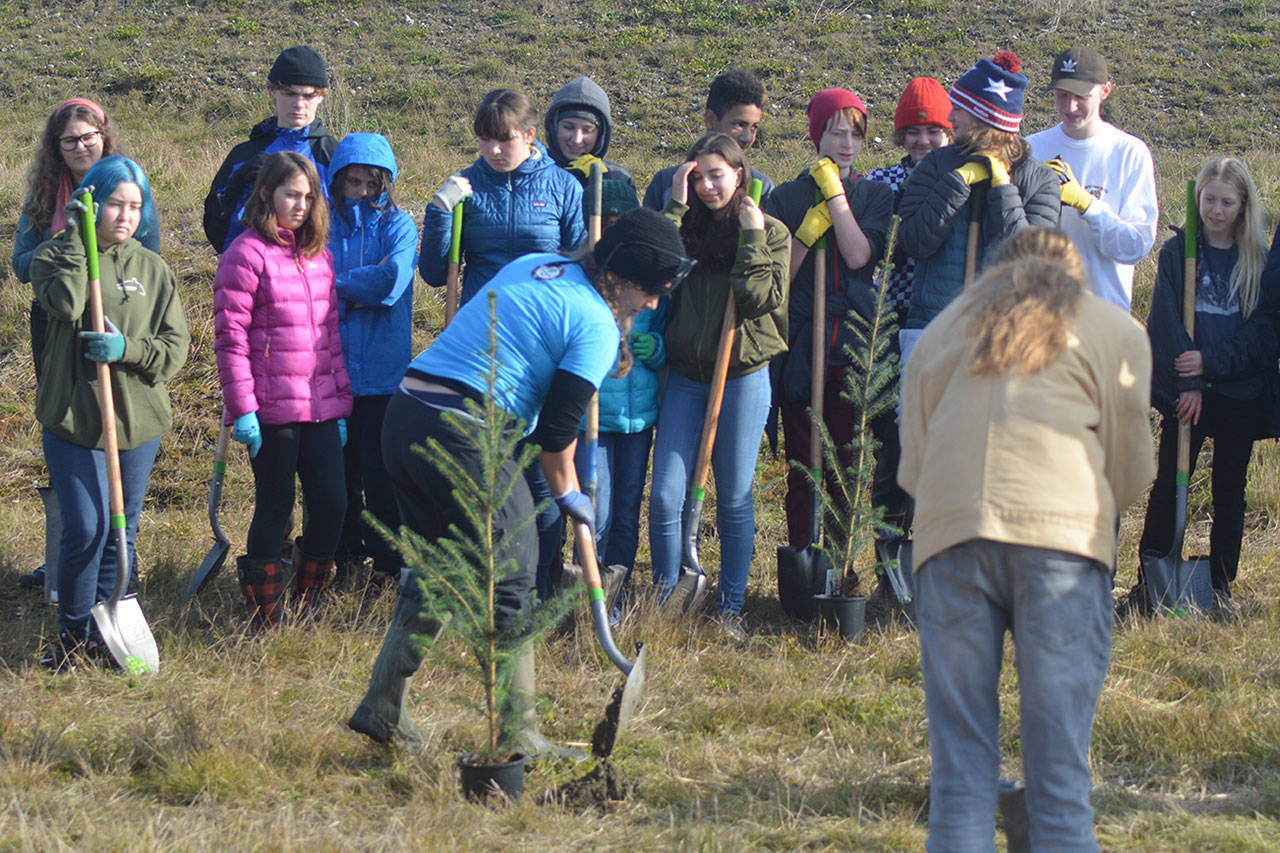MARYSVILLE – Everybody knows how to use a shovel, right?
Natasha Coumou, assistant restoration ecologist with the Tulalip Tribes, can’t assume that.
So when the tribes had a tree planting party at the Qwuloolt Estuary Wednesday Coumou gave a presentation on shovel safety.
“It’s not a pogo stick,” she said, explaining you don’t jump on it with both feet, only use one.
She also showed volunteers how to use a dibbler, which pokes a hole in the ground to put up stakes.
Coumou explained how to carry the tools and place them on the ground when not in use so no one would get hurt.
“Be aware of your surroundings,” she said, adding the open field on the west side of the dike was uneven and had both rocks and wetlands.
The 50 or so volunteers were planting bare roots and potted plants. In all, 2,500 plants needed to be planted. Many of the volunteers were middle and high school students at the private Exploration Academy in Bellingham. The students were broken into two groups – one for plants and one for stakes.
Those planting stakes used the buddy system, one using the dibbler the other putting in the stake.
Those planting plants learned they needed to dig a hole twice the size of the plant wide and 1 1/2 times the base of the plant deep. They also planted in rows to make them easier to maintain.
If they started digging, and they couldn’t break up the rocky ground, “Don’t bother,” Coumou said.


